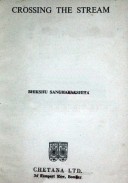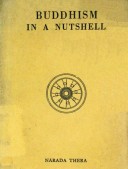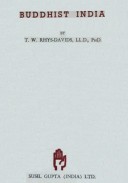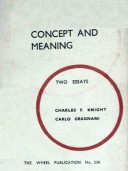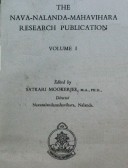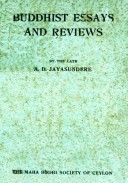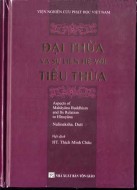Tìm Sách
Sách tiếng Anh-English >> Buddhist Logic Vol. I
Thông tin tra cứu
- Tên sách : Buddhist Logic Vol. I
- Tác giả : F. Th. Stcherbatsky
- Dịch giả :
- Ngôn ngữ : Anh
- Số trang : 558
- Nhà xuất bản : Dover Publications, Inc.
- Năm xuất bản :
- Phân loại : Sách tiếng Anh-English
- MCB : 1210000004842
- OPAC :
- Tóm tắt :
PREFACE
This work claims the consideration of the historian of the culture of Asia, of the Sanscrit philologist and of the general philosopher.
It is the last of a series of three works destined to elucidate what is perhaps the most powerful movement of ideas in the history of Asia, a movement which, originating in the VI century BC. in the valley of Hindustan, gradually extended its sway over almost the whole of the continent of Asia, as well as over the islands of Japan and of the Indian archipelago. These works are thus concerned about the history of the ruling ideas of Asia, Central and Eastern.
It also claims the consideration of the Sanscritist, because it is exclusively founded on original works belonging to the Sãstra class; these are Indian scholarly compositions, written in that specific scientific Sanscrit style, where the argument is formulated in a quite special terminology and put in the form of laconic rules; its explanation and development are contained in numerous commentaries and subcommentaries. To elucidate this quite definite and very precise terminology is the aim of a series of analytical translations collected in the second volume.
In addressing itself to the philosopher this work claims his consideration of a system of logic which is not familiar to him. It is a logic, but it is not Aristotelian. It is epistemological, but not Kantian.
There is a widely spread prejudice that positive philosophy is to be found only in Europe. It is also a prejudice that Aristotle’s treatment of logic was final; that having had in this field no predecessor, he also has had no need of a continuator. This last prejudice seems to be on the wane. There is as yet no agreed opinion on what the future logic will be, but there is a general dissatisfaction with what it at present is. We are on the eve of a reform. The consideration at this juncture of the independent and altogether different way in which the problems of logic, formal as well as epistemological, have been tackled Dignãga and Dharmakĩrti will possibly be found of some importance.
The philosopher in thus considering and comparing two different logics will perceive that there are such problems which the human mind naturally encounters on his way as soon as he begins to deal with truth and error. Such are, e. g., the problems of the essence of a judgment, of inference and of syllogism; the problems of the categories and of relations; of the synthetically and analytical judgments; of infinity, infinite divisibility, of the antinomies and of the dialectical structure of the understanding. From under the cover of an exotic terminology he will discern features which he is accustomed to see differently treated, differently arranged, assigned different places in the system and put into quite different contexts. The philosopher, if he becomes conversant with the style of Sanscrit compositions, will be tempted not only to interpret Indian ideas in European terms, but also to try the converse operation and to interpret European ideas in Indian terms.
My main object has been to point out these analogies, but not to produce any estimate of the comparative value of both logics. On this point I would prefer first to hear the opinion of the professional philosopher who in this special department of knowledge has infinitely more experience than I may claim to possess. I would be amply satisfied if I only succeed to arouse his attention and through him to introduce Indian positive philosophers into the community of their European brotherhood.
TABLE OF CONTENTS
Abbreviations
Preface
Introduction
- Buddhist Logic what
- The place of Logic in the history of Buddhism
- First period of Buddhist philosophy
- Second
- Third
- The place of Buddhist Logic in the history of Indian philosophy
1. The Materialists
2. Jainism
3. The Sankhya System
4. The Yoga System
5. The Vedanta
6. The Mimamsa
7. The Nyaya-Vaisesika System
8. Buddhist Logic before Dignftga
9. The life of Dỉgnãga
10. The life of Dharmakirti
11. The works of Dhannakĩrti
12. The order of the chapters in Pramõna-vãitika
13. The philological school of commentators
14. The Cashmere or philosophic school of commentators
15. The third or religions school of commentators
16. Post-Buddhist Logic and the struggle between Realism and Nominalism in India
17. Buddhist Logic in China and Japan
18. Buddhist Logic in Tibet and Mongolia
Part I.—Reality and Knowledge (prãmãnya-vãda)
1. Scope and aim of Buddhist Logic
2. A source of knowledge what
3. Cognition and Recognition
4. The test of truth
5. Realistic and Buddhistic view of experience
6. Two realities
7. The double character of a source of knowledge
8. The limits of cognition. Dogmatism and
Part II.—The Sensible World
Chapter I. — The theory of Instantaneous Being (ksanika-vada).
1. The problem stated
2. Reality is kinetic
8. Argument from ideality of Time and Space
4. Duration and eztention are not real
5. Argument from direct perception
6. Recognition does not prove duration
7. Argument from an analysis of the notion of existence
8. Argument from an analysis of the notion of non-existence
9. Sãntiraksita’s formula
10. Change and annihilation
11. Motion is discontinuous
12. Annihilation certain a prior
18. Momentariness deduced from the law of Contradiction
14. Is the point-instant a reality? The Differential Calculus
15. History of the doctrine of Momentariness
16. Some European Parallels
Chapter II. — Causation (pratltya-samutpSda).
1. Causation as functional dependence
2 The formulas of causation
s. Causation and Reality identical
4. Two kinds of Causality
5. Plurality of causes
6. Infinity of causes
7. Causality and Free Wi
8. The four meanings of Dependent Origination
9. Some European Parallels
Chapter III. — Sense-perception (pratyaksam).
1. The definition of sense-perception
2. The experiment of Dharmakĩrti
8. Perception and illusion
4. The varieties of intuition
1. Mental sensation (manasa-praktyakya)
2. The intelligible intuition of the Saint (yogi-pratyakya)
3. Introspection (svasamvedana)
5. History of the Indian vies on sense-perception
6. Some European Parallels
Chapter IV. — Ultimate reality (paramSrtha-sat).
1. What is ultimately real
2. The Particular is the ultimate reality
3. Reality is unutterable
4. Reality produces a vivid image
5. Ultimate Reality is dynamic
6. The Monad and the Atom
7. Reality is Affirmation
8. Objections
9. The evolution of the views on Reality
10. Some European Parallels
Part III.—The constructed world
Chapter I. — Judgment.
1. Transition from pure sensation to conception
2. The first steps of the Understandin
8. A judgment what
4. Judgment and the synthesis in concepts
5. Judgment and namegiving
6. Categorie
7. Judgment viewed as analysis
8. Judgment as objectively valid
9. History of the theory of judgment
10. Some European Paralle
Chapter II. — Inference.
1. Judgment and Inference
2. The three terms
8. The various definitions of inference
4. Inferring and Inference
6. How far Inference is true knowledge
6. The three Aspects of the Reason
7. Dhamakirti’s tract on relations
8. Two lines of dependenc
9. Analytic and Synthetic judgments
10. The final table of Categories
11. Are the items of the table mutually exclusive
12. Is the Buddhist table of relations exhaustive
13. Universal and Necessary Judgments
14. The limits of the use of pure Understanding
15. Historical sketch of the views of Inference
16. Some European Parallels
Chapter III — Syllogism (pararthanumanam).
1. Definition
2. The members of syllogism
3. Syllogism and Induction
4. The figures of Syllogism
5. The value of Syllogism
6. Historical sketch of Syllogism viewed as inference for others
7. European and Buddhist Syllogism
1. Definition by Aristotle and by the Buddhists
2. Aristotle’s Syllogism from Example
3. Inference and Induction
4. The Buddhist syllogism contains two propositions
5. Contraposition
6. Figures
7. The Causal and Hypothetical Syllogis
8. Summary
Chapter IV. — Logical Fallacies.
1. Classification
2. Fallacy against Reality (asiddha-hetv-abhãsa)
3. Fallacy of a Contrary Reason
4. Fallacy of an Uncertain Reason
5. The Antinomical Fallacy
6. Dharmakirti's additions
7. History
1. Manuals of Dialectics
2. The refutative syllogism of the Msdhyamikas
3. The Vaisegika system influeuced by the Buddhists
4. The Nyaya system influenced by Dỉgnãga
8. European Parallels
Part IV.—Negation
Chapter I. — The negative judgment.
1. The essence of Negation
2. Negation is an Inference
3. The figures of the Negative Syllogism. The figure of Simple Negation
4. The ten remaining figure
5. Importance of Negation
6. Contradiction and Causality only in the. Empirical Sphere
7. Negation of supersensuous objects
8. Indian developments
9. European Parallels:
1. Sigwart’s theory
2. Denied copula and Negative Predicate
3. Judgment and Re-judgment
Chapter II. — The Law of Contradiction.
1. The origin of Contradiction
2. Logical Contradiction
3. Dynamical opposition
4. Law of Otherness
5. Different formulations of the Laws of Contradiction and Otherness
6. Other Indian schools on Contradiction
7. Some European Parallels
1. The Law of Excluded Middle
2. The Law of Double Negation
3. The Law of Identity
4. Two European Logics
5. Heracleitus
6. Causation and Identity in the fragments of Heracleitus
7. The Eleatic Law of Contradiction
8. Plato
9. Kant and Sigwart
10. The Aristotelian formula of Contradiction and Dharmakirti’s theory of Relations
Chapter III — Universale.
1. The static Universality of Things replaced by similarity of action
2. History of the problem of Universale
3. Some European Parallels
Chapter IV. — Dialectic.
1. Digniiga’s Theory of Names
2. Jinendrabuddhi on tbe Theory of the Negative Meaning of Names
1. All names are negative
2. The origin of Universale
3. Controversy with the Realist
4. The experience of individuals becomes the agreed experience of the Human Mind
5. Conclusion
3. Sãntirakạita and Kamalasila on the negative meaning of words
4. Historical sketch of the devolopment of the Buddhist Dialectical Method
6. European Parallels.
1. a) Kant and Hegel
2. b) J. S. Mill and A. Bain
3. c) Sigwart
4. d) Affirmation what
5. e) Ulrici and Lotxe
Part V.—Reality of the External World
1. What is Real
2. What is External
3. The three worlds
4. Critical Realism
5. Ultimate Monism
6. Idealism
7. Digniiga’s tract on the Unreality of the External World
8. Dharmakirti’s tract on the Repudiation of Solipsism
9. History of the problem of the Reality of the External World
10. Some European Parallels
11. Indo-European Symposion on the Reality of the External World
Conclusion
Indices
Appendix
Addenda
 Facebook
Facebook
 Google
Google
 Google+
Google+


